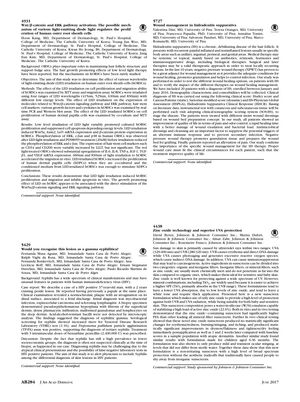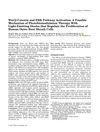Wnt/B-Catenin and ERK Pathway Activation: The Possible Mechanism of Various Light-Emitting Diode Light Regulates the Proliferation of Human Outer Root Sheath Cells
May 2017
in “
Journal of The American Academy of Dermatology
”
Wnt/ß-catenin ERK pathway LED light human outer root sheath cells hORSCs hair follicle hair growth MTT assay migration assay real-time PCR Western blot Wnt5a Axin2 Lef1 mRNA ß-catenin protein phosphorylation of ERK c-Jun p38 hair stem cell markers CD34 CD200 red light treatment IL-6 IL-8 TNF-a IGF-1 TGF-ß1 VEGF mRNA human dermal papilla cells hDPCs apoptosis Wnt/beta-catenin outer root sheath cells PCR Lef1 beta-catenin ERK phosphorylation red light TNF-alpha TGF-beta1 VEGF dermal papilla cells

TLDR LED light helps human hair root cells grow and prevents them from dying by activating specific growth pathways.
The study titled "Wnt/B-catenin and ERK pathway activation: The possible mechanism of various light-emitting diode light regulates the proliferation of human outer root sheath cells" investigated the effects of different wavelengths of LED light on human outer root sheath cells (hORSCs), which are important for hair follicle structure and hair growth. The researchers used MTT and migration assays to examine cell proliferation and migration, and real-time PCR and Western blot assays to analyze the expression of molecules related to the Wnt/ß-catenin and ERK signaling pathways, as well as hair stem cell markers and various growth factors. The results showed that low-level LED light irradiation promoted hORSC proliferation, suppressed apoptosis, and induced the expression of Wnt5a, Axin2, Lef1 mRNA, and ß-catenin protein. Additionally, phosphorylation of ERK, c-Jun, and p38 was observed, and the expression of hair stem cell markers CD34 and CD200 was increased, although not significantly. Red light treatment notably upregulated the expression of IL-6, IL-8, TNF-a, IGF-1, TGF-ß1, and VEGF mRNA. LED-irradiated hORSCs also enhanced the proliferation of human dermal papilla cells (hDPCs) in co-culture. The study concluded that LED light irradiation stimulates hORSC proliferation and migration, and inhibits apoptosis, with the growth-promoting effect likely due to direct stimulation of the Wnt5a/ß-catenin and ERK signaling pathways. No commercial support was identified for this study.




